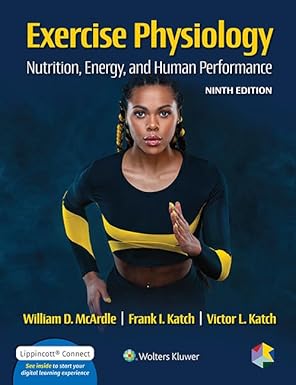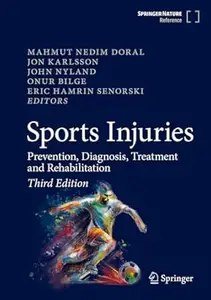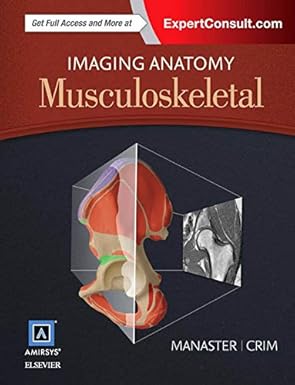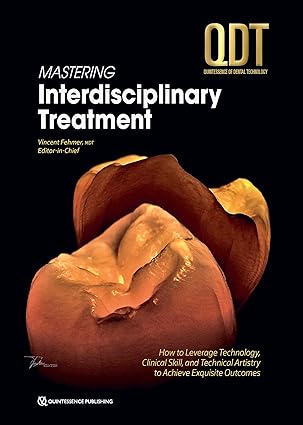For the two-semester A&P laboratory course.
Get hands-on with this affordable, integrated A&P lab manual
Laboratory Manual for Human Anatomy & Physiology: A Hands-on Approach maximizes learning by using a diverse collection of pre-lab, lab, and post- lab activities, over 100 specially-commissioned photos of anatomical models, and over 50 robust lab videos. Students prepare for labs using a variety of learning modes, such as coloring and labeling activities or watching lab videos. The straightforward, step-by-step lab activities provide concise background information and feature images of anatomical models and cadavers. The variety of anatomical models and cadavers reinforces what students learn from studying actual models in the lab and helps them identify and remember key anatomical structures.
The lab manual incorporates the terminology and much of the artwork used in Erin Amerman’s Human Anatomy & Physiology text, but can accompany any A&P textbook. The lab manual is available in three versions for your students: Main, Cat, and Pig. The Cat and Pig versions are identical to the Main version except that they include seven additional cat dissection and 9 additional pig dissection exercises, respectively, at the back of the lab manual.
Also available with Modified Mastering A&P
By combining trusted author content with digital tools and a flexible platform, Mastering personalizes the learning experience and improves results for each student. Mastering A&P provides an extension of learning, allowing students a platform to practice, learn, and apply knowledge outside of the classroom.
NOTE: You are purchasing a standalone product; Mastering A&P does not come packaged with this content. Students, if interested in purchasing this title with Mastering A&P, ask your instructor to confirm the correct package ISBN and Course ID. Instructors, contact your Pearson representative for more information.
If you would like to purchase both the loose-leaf version of the text and Mastering A&P, search for:
0135479363 / 9780135479360 Laboratory Manual for Human Anatomy & Physiology: A Hands-on Approach, Main Version, Loose Leaf Plus Modified Mastering A&P with Pearson eText -- Access Card Package, 1/e
Package consists of:
-
0135479398 / 9780135479391 Laboratory Manual for Human Anatomy & Physiology: A Hands-on Approach, Main Version, Loose Leaf
-
0135718244 / 9780135718247 Modified Mastering A&P with Pearson eText -- ValuePack Access Card -- for Laboratory Manual for Human Anatomy & Physiology: A Hands-on Approach
Preface
Preface is available for download in PDF format.
https://www.pearsonhighered.com/assets/preface/0/1/3/5/0135718392.pdf
برای دوره دو ترم آزمایشگاهی A&P.
با این کتابچه راهنمای آزمایشگاهی A&P مقرون به صرفه و یکپارچه عمل کنید
راهنمای آزمایشگاهی برای آناتومی و فیزیولوژی انسان: رویکرد عملیبا استفاده از مجموعه متنوعی از فعالیتهای قبل، آزمایشگاه و بعد از آزمایشگاه، یادگیری را به حداکثر میرساند. بیش از 100 عکس سفارشی ویژه از مدل های تشریحی و بیش از 50 ویدیوی آزمایشگاهی قوی. دانش آموزان با استفاده از انواع حالت های یادگیری، مانند فعالیت های رنگ آمیزی و برچسب زدن یا تماشای فیلم های آزمایشگاهی، برای آزمایشگاه ها آماده می شوند. فعالیت های آزمایشگاهی ساده و گام به گام اطلاعات پس زمینه مختصر و تصاویری از مدل های تشریحی و جسد را ارائه می دهد. تنوع مدلهای تشریحی و جسدها، آموختههای دانشآموزان از مطالعه مدلهای واقعی در آزمایشگاه را تقویت میکند و به آنها کمک میکند ساختارهای آناتومیکی کلیدی را شناسایی و به خاطر بسپارند.
راهنمای آزمایشگاه اصطلاحات و بسیاری از آثار هنری مورد استفاده در متن آناتومی و فیزیولوژی انسان ارین عامرمن را در خود جای داده است، اما میتواند هر کتاب درسی A&P را همراهی کند. کتابچه راهنمای آزمایشگاه در سه نسخه برای دانش آموزان شما موجود است: اصلی، گربه و خوک. نسخههای Cat و Pig مشابه نسخه اصلی هستند با این تفاوت که به ترتیب شامل هفت تمرین تشریح گربه و 9 تمرین اضافی تشریح خوک در پشت دفترچه راهنمای آزمایشگاه میشوند.
همچنین با Modified Mastering A&P
موجود است
با ترکیب محتوای نویسنده قابل اعتماد با ابزارهای دیجیتال و یک پلت فرم انعطافپذیر، Mastering تجربه یادگیری را شخصیسازی میکند و نتایج را برای هر دانشآموز بهبود میبخشد. تسلط بر A&P گسترش یادگیری را فراهم میکند و به دانشآموزان اجازه میدهد تا در خارج از کلاس درس تمرین کنند، یاد بگیرند و دانش را به کار ببرند.
توجه: شما در حال خرید یک محصول مستقل هستید. Mastering A&P با این محتوا همراه نیست. دانشجویانی که علاقه مند به خرید این عنوان با Mastering A&P هستند، از استاد خود بخواهید که ISBN و شناسه دوره صحیح بسته را تایید کند. مربیان، برای اطلاعات بیشتر با نماینده پیرسون خود تماس بگیرید.
اگر میخواهید هم نسخه بدون برگ متن و هم Mastering A&P را خریداری کنید، عبارت:
را جستجو کنید.
0135479363 / 9780135479360 کتابچه راهنمای آزمایشگاهی برای آناتومی و فیزیولوژی انسان: رویکرد عملی، نسخه اصلی، A&P اصلاح شده Loose Leaf Plus با Pearson eText -- بسته کارت دسترسی، 1/e
بسته شامل موارد زیر است:
-
0135479398 / 9780135479391 راهنمای آزمایشگاهی برای آناتومی و فیزیولوژی انسان: رویکرد عملی، نسخه اصلی، برگ سست
-
0135718244 / 9780135718247 اصلاح شده مسترینگ A&P با Pearson eText -- کارت دسترسی ValuePack -- برای راهنمای آزمایشگاهی برای آناتومی و فیزیولوژی انسان: رویکرد عملی
پیشگفتار
پیشگفتار برای دانلود در قالب PDF موجود است.
https://www.pearsonhighered.com/assets/preface/0/1/3/5/0135718392.pdf










